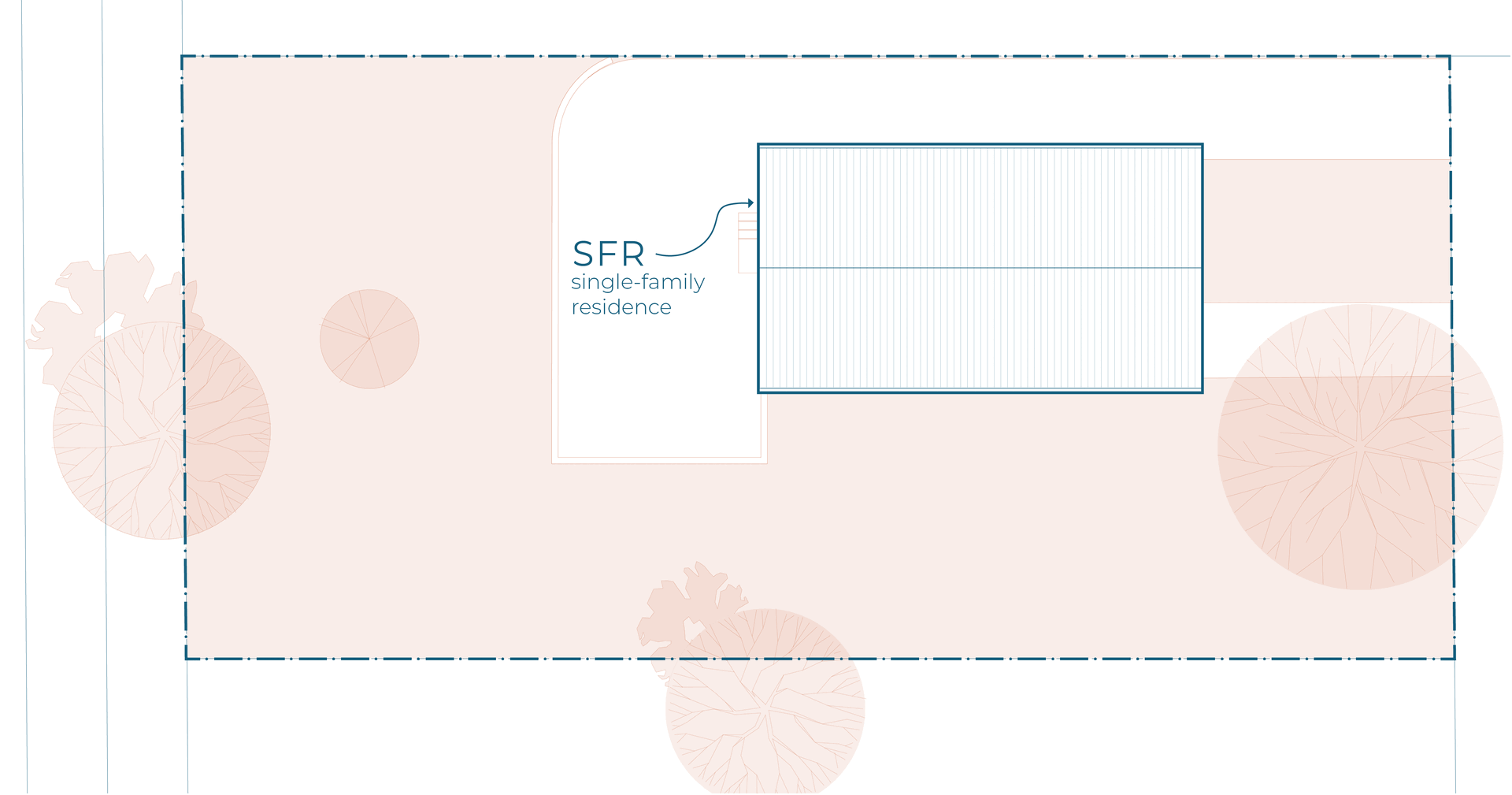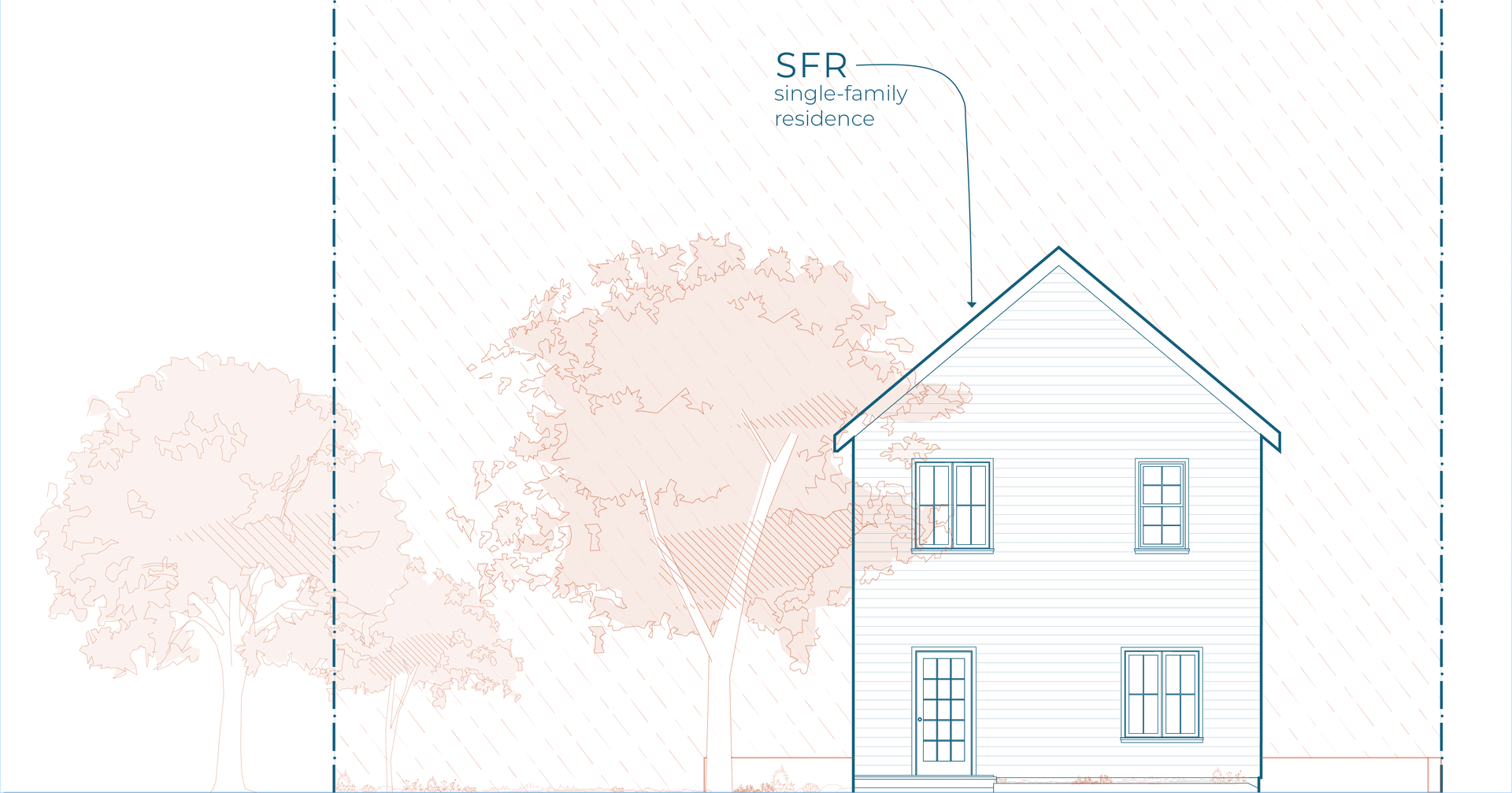Expanding Density in Seattle’s Neighborhood
Residential Zones
Continuing our exploration of the potential impacts of upcoming code changes in Seattle’s Neighborhood Residential zones, this article examines how to increase housing density on lots with smaller homes while maintaining the character of residential neighborhoods.
In our last article, we explored how to convert a larger existing home into multiple units—dividing it into three residences and adding a Detached Accessory Dwelling Unit (DADU) in the backyard. This effectively transformed a single-unit lot into a four-unit property. Now, we shift our focus to achieving similar density increases on lots with smaller existing homes.

The Starting Point: A Modest Single-Family Home
For this example, we begin with a typical Seattle lot measuring 50 feet by 100 feet, featuring a single-family home of approximately 1,200 square feet. Despite its modest size, the home includes three bedrooms but is underbuilt by today’s density standards.
Step 1: Adding an Attached Accessory Dwelling Unit (ADU)
The first step in increasing density is adding an attached ADU to the existing home. This effectively doubles the number of residences on the lot while preserving the scale and visual character of the neighborhood. As required by code, we also plant new trees to contribute to Seattle’s urban canopy.
Step 2: Introducing a Detached Accessory Dwelling Unit (DADU)
Next, we add a DADU in the rear yard. While current draft code language allows for two additional primary units, opting to classify this new structure as a DADU allows us to use a pre-approved plan. This not only streamlines the permitting process—reducing approval times and fees—but also ensures a well-designed unit that integrates smoothly into the site. Again, we plant additional trees in compliance with code requirements.
Step 3: Maximizing Density with a Second DADU
Finally, we introduce a second DADU in the backyard, bringing the total density to four units with nine bedrooms. With careful site planning, we achieve a significant increase in housing while maintaining neighborhood aesthetics and expanding the tree canopy.

Balancing Growth and Neighborhood Character
By leveraging thoughtful design and Seattle’s evolving zoning regulations, we can add much-needed housing while respecting the existing residential fabric. Strategic placement of units and greenery helps maintain the sense of space, privacy, and visual appeal that define these neighborhoods.
As the city continues to refine its zoning policies, opportunities for responsible, well-integrated density expansion will grow. We fully support the increased density allowances and advocate for even greater flexibility—such as sixplexes and beyond—where appropriate. By embracing these changes, we can help create a more diverse, sustainable, and accessible housing landscape in Seattle, ensuring that growth meets the needs of the city’s evolving communities